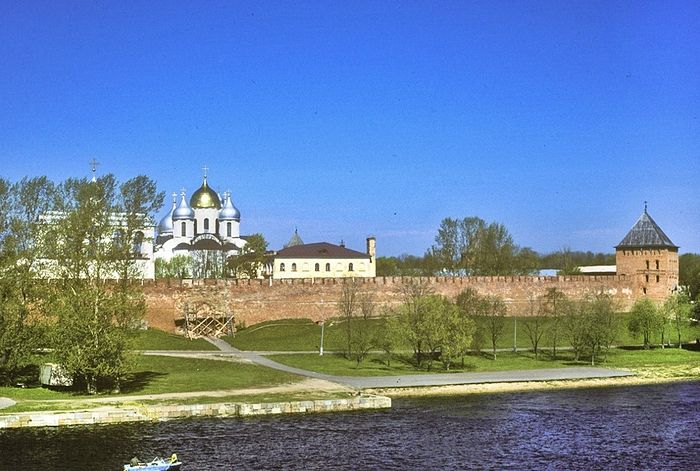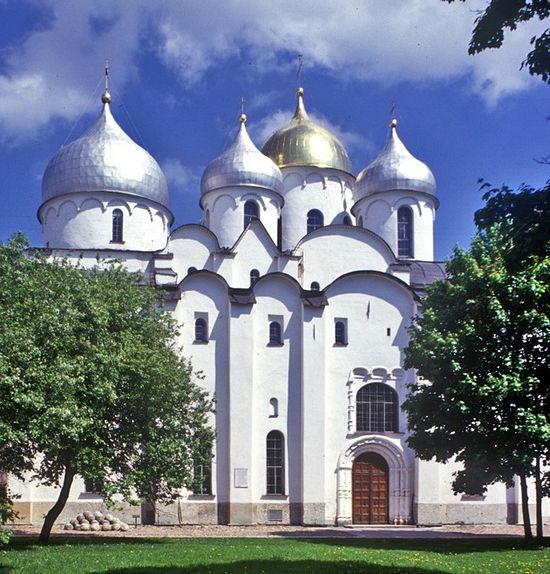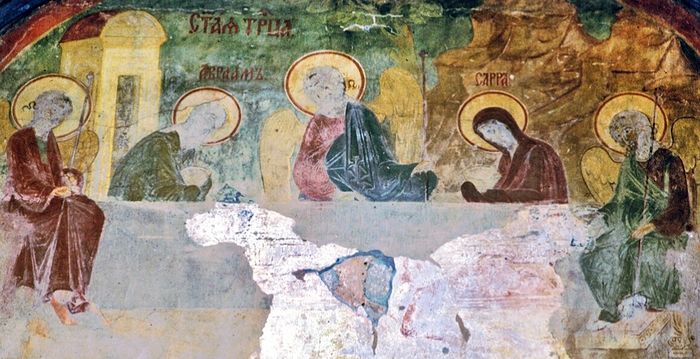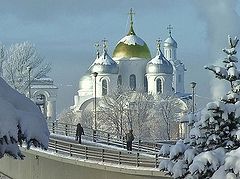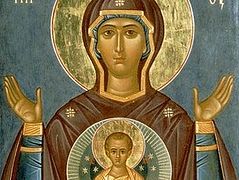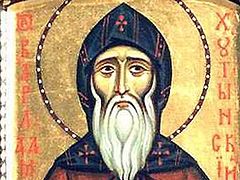Source: Russia Beyond the Headlines
January 28, 2016
Novgorod city, officially referred to as “Novgorod the Great” (Veliky Novgorod), since 1999, is a magnificent repository of medieval Russian art, with more than 50 churches and monasteries extending from the 11th through the 17th centuries. In 1992, this wealth of historic monuments, centred on the Novgorod Kremlin, was included in the UNESCO World Heritage list.
Medieval chronicles first mention Novgorod between 860 and 862, when the eastern Slavs summoned the Varangian leader Rurik to assume control of their affairs. Although the Rurikovich rulers transferred power to Kiev at the end of the 9th century, Novgorod continued to exercise control over a vast area of northern Rus.
In 989, after the domains of Grand Prince Vladimir of Kiev officially accepted and adopted Christianity, Novgorod was visited by Vladimir's ecclesiastical emissary, Bishop Joachim of Kherson. The bishop threw pagan idols into the Volkhov River and commissioned the first stone church, dedicated to Sts. Joachim and Anna, as well as a wooden Church of St. Sophia, with 13 "tops," or domes.
The political history of Novgorod was far from calm. The city not only frequently challenged its leaders, including Rurik, but also participated in princely feuds that wracked the state of Kiev. Nevertheless, Novgorod prospered during the 11th and 12th centuries, being a part of the Dnieper trade route from the Baltic to the Black Sea. With its mercantile wealth, the city had the means to create a citadel and an imposing architectural ensemble of churches.
How to get there: Take a train from Moscow (Leningradsky Railway staton, departure every day 10:05 p.m., travel time 8 hours) or St. Petersburg (Moskovsky Railway station, departure 7:45 a.m. and 7:55 a.m., travel time 4 hours).
The oldest surviving and most imposing monument in the city is the Cathedral of St. Sophia (Divine Wisdom), built between 1045 and 1050 and located in the Kremlin, on the west bank of the Volkhov River. The prince of Novgorod, Vladimir Yaroslavich, his father, Grand Prince Yaroslav the Wise, and the Archbishop Luke of Novgorod commissioned the building of the Cathedral.
It is fitting that Yaroslav, whose own Sophia Cathedral in Kiev was entering its final phase of construction at the time, should have played a role in the building of the Novgorod St. Sophia. Novgorod had been the base of their power during the reign of his father, Grand Prince Vladimir of Kiev.
Yaroslav's involvement in building the cathedral would have been essential from a practical point of view. Masonry construction was rare in Novgorod before the middle of the 11th century, and a cathedral of such size and complexity could only have been built under the supervision of experienced builders.
The builders applied a method of placing blocks of local rough gray limestone within a mortar of crushed brick and lime that imparted a pink hue to the coarsely textured façades. Narrow plinthos brick was used for the interior arches and vaulting, as well as for other segments that required structural precision. Stucco was first applied only in the interior, which was then covered with frescoes painted by local and foreign masters from Greece and the Balkans.
On the exterior the cathedral walls presented a highly textured appearance, even after cladding with mortar to reduce the unevenness of the surface. The earliest reference to the application of whitewash to the walls appears in the Novgorod chronicle under the year 1151. The Novgorod cathedral included enclosed galleries attached to the north, west, and south facades.
The galleries evolved while building the cathedral, as an integral part of the structure on both levels, though the cathedral was originally intended to be only one storey. The north and south galleries contain chapels at ground level, and the west gallery includes a round stair tower that leads to the upper gallery levels, including the choir gallery in the main structure.
The facade above the west portal displays fragments of a medieval fresco depicting the Old Testament Trinity. The portal itself contains the bronze Magdeburg Doors, produced in Magdeburg in the 1050s and taken as loot from the Varangian fortress of Sigtuna by Novgorod raiders in 1117.
The culminating point of the Novgorod St. Sophia Cathedral is its ensemble of cupolas, whose original form would have had a lower pitch than the helmet-shaped domes now in place. The design is one of the most impressive moments in medieval Russian architecture. The dome over the central crossing predominates in height and diameter, yet the four subsidiary domes are so closely placed as to appear part of one perfectly devised whole. The structure itself provides an admirable base for the domes, with its lack of surface decoration and only the simplest of architectural details.
The emphasis on height is maintained in the interior, where the piers of the main aisles soar directly to the barrel ceiling vaults. Novgorod chronicles indicate that the interior was painted with frescoes over a period of several decades.
According to the Third Novgorod chronicle, soon after the completion of construction, "icon painters from Tsargrad (Constantinople)" painted Christ with his hand raised in blessing (probably an image of the Pantocrator in the central dome) and other representations of the Savior. Fragments of the 11th-century work, including full-length paintings of Emperor Constantine and Elena, have been uncovered, as well as early 12th-century frescoes.
Most of the original paintings of the interior haves vanished under centuries of renovations. (The current frescoes date primarily from the 19th century.) The Novgorod cathedral lacked the elaborate mosaics characteristic of major churches in Kiev before the mid-12th century, yet there was decorative mosaic work on the floor and in the altar space.

